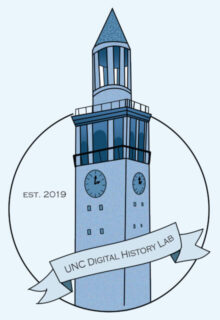By Professor Michael Morgan, UNC History Department
In March, when the pandemic forced UNC to suspend in-person teaching, instructors on campus scrambled to adapt their courses. In the case of my undergraduate survey of Cold War history, I wanted to offer my students maximum flexibility while preserving the course’s academic rigor. Because many students had moved home and no longer had predictable schedules or access to a university library, the assignments, lectures, and discussion sections had to change. But I wanted to make sure that its intellectual essence—especially the skills of analysis and argumentation that stand at the heart of every good history course—did not.
Modifying the assignments posed no serious problems. Instead of a three-hour, in-person final exam, students would now take a 24-hour, take-home final. Instead of one long research essay, students could (if they preferred) write two shorter papers that didn’t require intensive research. I also offered to extend any deadline upon request, no questions asked.
Figuring out how to adapt the weekly lectures and small-group discussion sections proved more difficult. In normal times, the course thrives on the energy that comes from having everyone in the same room. In my lectures, I combine old-fashioned storytelling with scholarly analysis. I use anecdotes to grab students’ attention and show how individual episodes raise important questions about how to interpret the conflict between the superpowers. In the middle of lecture, I’ll often pause to throw a question out to the class, pushing students to grapple with a problem on the fly, and helping me to gauge how well they’ve grasped the subject at hand. Above all, I try to convey my enthusiasm for what we’re studying, on the assumption that it will rub off on the class. When the lectures and discussion sections work well, the students see why this stuff matters, and they learn how to think creatively about it. They get excited, and that excitement drives their intellectual growth. In moving online, the key question was how to encourage the same enthusiasm and develop the same analytical skills through a computer screen.
My first inclination was to deliver the lectures live in their regular time slots, on the assumption that this approach would preserve the spontaneity of the classroom and compel students to pay attention. A dress rehearsal convinced me that this approach was too complicated. Compared to lecturing in front of a live audience, there were more variables to worry about, and more things that could spoil the experience, from bad internet connections to bad lighting. Besides, students’ schedules might not permit them to watch, and Zoom fatigue might prevent them from digesting a whole lecture in one sitting. Even if they could tune in, it would be hard to replicate the spontaneous back-and-forth of the classroom. Clicking the “raise hand” button on Zoom is no substitute for raising a hand in person, and might derail the proceedings rather than enriching them.
For all of these reasons, I decided to record the lectures ahead of time and post them on the course website, where students could watch them as their schedules permitted. Using VoiceThread, I uploaded the slides that I’d normally show in class and recorded a short voice-over for each one. Some lasted a few seconds, others a few minutes. In each 50-minute lecture, which covered the same material that I’d otherwise present in person, I ran through two or sometimes three dozen slides, hoping that the brisk pace would keep students engaged. Students could click through, slide by slide, at their own pace. If they needed to hear something a second time, they could always double back. This method had the added benefit of being low-tech. In order to produce the lectures, I only needed a good microphone. If I flubbed my lines, or my internet connection dropped, or my five year-old suddenly demanded my attention, I’d only have to re-record the short clip for that particular slide.
For all its benefits, though, this approach couldn’t replicate the spontaneity of a live lecture. In order to preserve some of this energy, and to give students a chance to wrestle with the course’s big questions, I asked the TAs to lead their weekly sections in real time via Zoom. These discussions couldn’t provide a perfect substitute for the in-person experience. The pace of discussion on Zoom is inevitably slower than face to face, giving fewer students the chance to ask questions or contribute. Some might not be able to participate at all if their internet connections or schedules interfere. Nevertheless, even a second-best discussion was better than no discussion at all. And those students who couldn’t participate in real time had the option of writing a brief response to the assigned readings instead.
To my relief, this hybrid approach worked well. The students kept up with the lectures and, with only a handful of exceptions, dialed in to the weekly discussion sections and stayed on top of the readings. A large majority of the students turned in the remaining assignments and completed the final exam, and the quality of their work was comparable to that from a regular semester on campus. The experience confirmed what I had long suspected: there’s no substitute for in-person classes. In extraordinary circumstances, however, it’s possible to adapt and get pretty close to the real thing.
